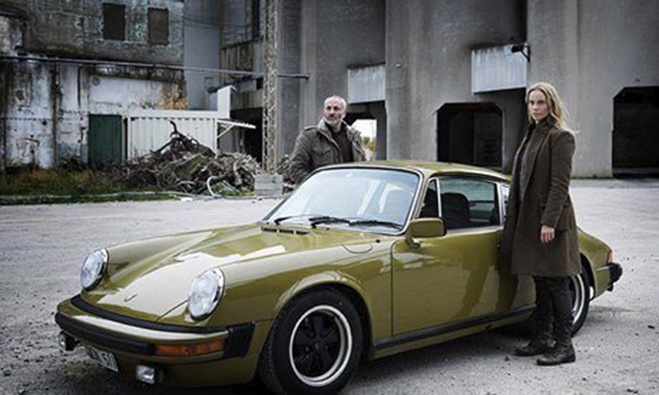Journalist, Alex Clark, on the rise of Scandimania
Over the last few years, you might occasionally have been forgiven for thinking Britain had become a suburb of Scandinavia, such has been the eagerness with which we’ve embraced the culture of the countries to the north of us. Perhaps the most obvious and widespread sign of our love affair with all things Nordic has been on our television screens (which we might watch from our Ikea sofa, sipping from that sturdy Ikea wine-glass beloved by so many households): crime stories such as Wallander, The Killing, The Bridge and, most recently, Trapped; the pacey political drama Borgen; the family at loggerheads over a disputed inheritance in The Legacy. There was a brief time when you were nobody if you didn’t have a Sarah Lund jumper – now we’d probably all rather have Saga Noren’s sludge-coloured Porsche (though the actor who plays her, Sofia Helin, told me when I interviewed her that it’s pretty uncomfortable and not that easy to drive).

Sofia Helin in The Bridge
I’ve always had a great fondness for Scandinavia. My parents met when they were both working on the Norwegian Fred Olsen shipping line in the 1960s – the heyday of cruise-ship glamour. My mother always remembered her first night on board, when, feeling somewhat adrift, she was startled by a door flung open and the sudden arrival of her cabin-mate: a tall, beautiful and dramatic woman from Oslo. The pair became instant friends, and the Norwegian became my godmother; my own first trip abroad, aged three, was to visit her in her family’s summer cabin in the island fjords. I still have the traditional Dala horse she gave me, and she gifted me an abiding interest in the art and culture of the area (interestingly, she also has a passion for Trollope).
Despite all this cross-cultural enthusiasm, there is still much about Scandinavian art, music and literature that we have yet to discover. I recently came to the Dulwich Picture Gallery to interview writer Lisa Stromme, whose debut novel The Strawberry Girl focuses on artist Edvard Munch and his most famous painting, The Scream; the picture’s enduring popularity might in part derive from the way it captures the way we think about the Scandinavian psyche, its interiority and brooding melancholia. But there is a world of Norwegian art beyond Munch, as demonstrated by the gallery’s current exhibition of the work of Nikolai Astrup, the painter and printmaker whose vivid evocations of the landscape and of traditional Norwegian life are a jolt to the senses.
The Gallery’s Scandimania season will take Astrup into a different sphere with a group crocheting event (bring your own hooks) inspired by his work; and other events in the season reinforce the idea that the making of art, music and craftware are deeply embedded in the culture and history of the region. From the long days of darkness to the short nights during which darkness hardly seems to fall at all, Scandinavian culture privileges these kinds of communal activity – and it’s our privilege that they have travelled to become part of our lives too. Though they can keep the lutefisk.
Alex Clark is a British literary journalist and editor who has written for The Guardian, The Observer and the Times Literary Supplement. She also hosts the Vintage Podcast about books.
